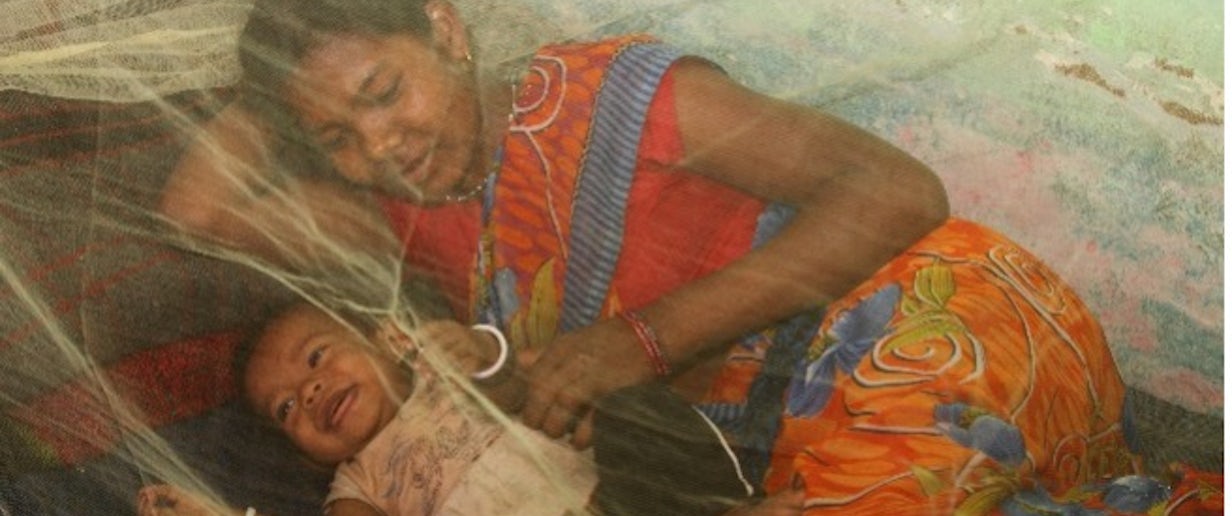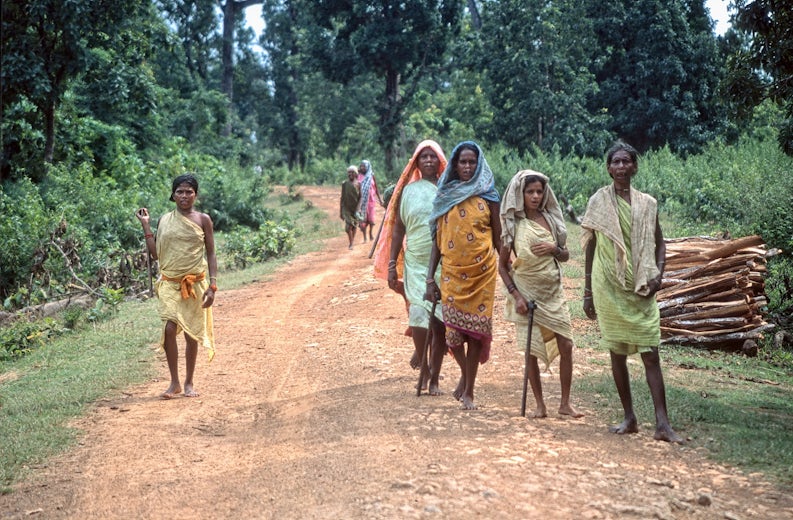ASTMH 2022: Overcoming Neglected Challenges in Malaria Elimination to Reach the Last-Mile
by APLMA & Save the Children •

Mother and infant smiling under green bed net. Photo by Ehtisham Husain for the President's Malaria Initiative
In a year with multiple new COVID variants, monkeypox, and concerns for future pandemic preparedness, malaria – the world’s oldest disease – remained high on the agenda at the 2022 The American Society of Tropical Medicine & Hygiene (ASTMH) Annual Meeting last month. This meeting draws top experts from around the world to discuss advances in global health, from the latest technological advances to local knowledge from remote field locations.
At this year’s ASTMH Annual Meeting, the symposium hosted by Save the Children US and co-chaired by African Leaders Malaria Alliance (ALMA) entitled ‘Overcoming Neglected Challenges to Malaria Elimination to Reach the Last-Mile,’ featured a prominent group of speakers to discuss diverse issues relating to gender equality, climate change, political instability, drug resistance, and COVID-19 in the context of malaria. The last mile of malaria elimination may be the hardest milestone to cross and will require taking a hard look at these challenges which have previously been neglected to reach the most vulnerable communities.
Underpinning gender inequality, climate change, political instability, drug resistance, and COVID-19 is inequity, which is the result of varied and often complex intrinsic social, political and economic forces as well as discrimination. Addressing these issues requires not only good data and information, but also intentionality and inclusion of those most affected.
Irene Koek, Save the Children

Outlook on Malaria’s Neglected Challenges
While once a global epidemic, malaria has now become a disease of the poor. Even without sophisticated new technologies and innovations, the Global North was able to eliminate the disease decades ago, and we have even made great progress in the Global South – cutting deaths due to malaria by half in the past 20 years. And yet, 400,000 people still die each year of malaria.
Today, malaria cases are disproportionately found in the world’s most vulnerable communities, from South America to Africa to Papua New Guinea. To reach these affected people and complete the last mile of malaria elimination, we need to use tailored, inclusive approaches that bridge cross-cutting issues and account for future challenges.
Why are we still talking about the same challenges in some of the same places for so long, when we have already successfully eliminated malaria in so many other places? Perhaps it is about our failure to effectively translate the science of malaria elimination for people who live where the pavement ends.
Dr Sarthak Das, Asia Pacific Leaders Malaria Alliance

An Inclusive Approach
To reach vulnerable communities, we must include vulnerable communities in every stage of the malaria programme lifecycle. This includes women and girls, who have traditionally faced the worst possible malaria outcomes while also playing an essential role in providing health services to address malaria.
Malaria and gender inequalities work in tandem to have long term consequences on women and the communities they live in, which compromises girls’ schooling, nutrition, and language that limits their earning potential.
Dr Alaa Murabit, Bill & Melinda Gates Foundation
Continued outreach in at-risk areas, including regions mired by political instability, is also essential to ensuring the gains against malaria are not lost due to conflict or emergencies. As seen in the current example of Myanmar, the risk of violence can lead to massive shifts in human behaviour and policy goals which negatively impact malaria objectives if programmes are unable to remain abreast of the situation and innovate.
The people from malaria free areas are moving to the endemic areas in the forest and the border areas. Significant restrictions are also imposed, and the importation delays and commodity shortages are contributing the most to the increasing disease burden.
Dr Min Min Thein, Save the Children Myanmar

Plan for Existing and Future Challenges
While we aim to end malaria by 2030, a lot can change before then; malaria programmes must take that into account. With climate change looming, it is important for malaria programmes to reduce their carbon footprint and also plan for how to continue delivering on malaria services even as extreme weather events will become more frequent. The reality is malaria programs deal with climate and weather every day—we know what needs to be done and we have the tools to do it, with or without the risk of climate change. The real problem will be continuing to move commodities during weather emergencies, such as in the case of the recent flooding in Pakistan.
Weather determines both the parasite developments in mosquitoes and the entire mosquito lifecycle, from egg laying on to adult survival.
Dr Rick Steketee, U.S. President’s Malaria Initiative
Drug-resistant malaria also remains an ongoing fight. While nations in the Greater Mekong Subregion successfully turning the tide against artemisinin-resistant malaria parasite strains, similar challenges are now spreading in Africa. Investments in malaria surveillance and identification is important to detecting these new outbreaks, while research and development for new treatment options is important for victory in the long term.
So, this is the greater goal: protecting future treatment options.
Dr Chanaki Amaratunga, Mahidol-Oxford Tropical Medicine Research Unit
Finally, preparing for future pandemics must also be a priority for malaria programmes. As we have seen with COVID, many countries experienced setbacks in meeting their malaria targets due to the changing protocols and shifting of resources towards addressing the new pandemic. However, we also saw that some nations were able to innovate and integrate in order to meet the demands of multiple health challenges. Adopting a whole-of-government approach and sustained leadership at local and national levels now to prepare for future health emergencies is key.
Many countries were able to adapt interventions and integrate their COVID responses with malaria.
Dr Sarthak Das, Asia Pacific Leaders Malaria Alliance
Finishing the last mile of malaria elimination requires reaching the hard-to-reach. To achieve this, malaria programming must incorporate many cross-cutting themes which welcome diverse voices and plan for present and future challenges in gender, climate change, political instability, drug resistance, and future pandemics. We cannot end malaria alone.
APLMA thanks everyone who took part in this symposium and looks forward to putting these discussions into practice together. For more information on this symposium, visit the ASTMH event website below.






